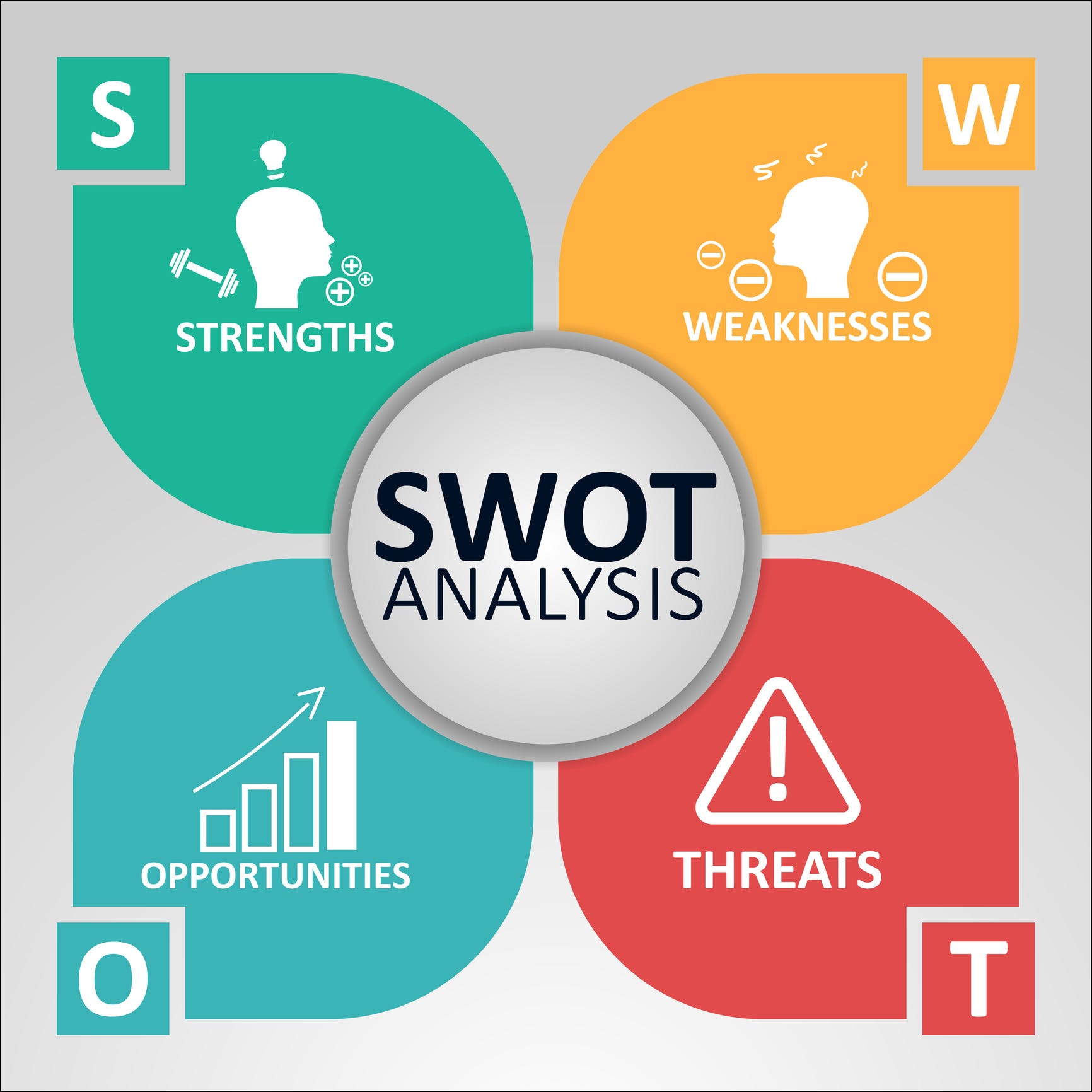Physical Address
304 North Cardinal St.
Dorchester Center, MA 02124
Physical Address
304 North Cardinal St.
Dorchester Center, MA 02124

Understanding the dynamics of your business environment is crucial for strategic planning and decision-making. One of the most effective ways to achieve this is through a comprehensive analysis known as SWOT Analysis: Identify Your Business’s Strengths and Weaknesses. This tool allows organizations to evaluate their internal capabilities and external opportunities, shaping their future strategies accordingly.
SWOT stands for Strengths, Weaknesses, Opportunities, and Threats. This analytical framework enables businesses to assess where they currently stand in the market and what they can leverage to grow effectively. The ultimate goal is to identify your business’s strengths and weaknesses while also looking at outside factors that could enhance or inhibit growth. Let’s explore each component in detail.
Strengths are the internal traits that give your business a competitive advantage. Recognizing these attributes allows companies to capitalize on their best features. For instance, do you have a highly skilled workforce? Perhaps your products or services are of superior quality, or your brand has established strong customer loyalty. By identifying your unique selling propositions, you position your business to take advantage of market opportunities effectively.
To accurately evaluate your strengths, consider conducting internal surveys within your organization. Engage with employees to gather insights on what they perceive as the company’s strong points. This collaborative approach not only reinforces team morale but also uncovers valuable perspectives that might be overlooked. Identifying your business’s strengths is not just a matter of self-affirmation; it’s about crafting a strategy that exploits these advantages systematically.
Every business has its weaknesses, which can hinder growth if left unchecked. These could range from resource limitations and skill gaps to outdated technology or a lack of market presence. Recognizing these limitations is paramount for businesses aiming for long-term success. By identifying your weaknesses, you are taking the first step toward addressing them and mitigating risks.
To bring weaknesses to light, it might be beneficial to implement a SWOT matrix, where you can categorize the aspects of your business. Engaging external consultants for an unbiased view can also be helpful. By understanding your weaknesses, you can create structured approaches to convert these into strengths. For example, if outdated technology is a weakness, investing in modern tools could enhance productivity and service delivery.
Opportunities refer to external factors that can contribute to your business’s success. These could be emerging markets, technological advancements, changes in consumer behavior, or even favorable economic conditions. The landscape of opportunity is always evolving, and analyzing this environment is crucial for seizing competitive advantages.
Keep a keen eye on market trends and conduct regular environmental scans to identify potential opportunities for your business. Networking and building relationships can also unveil doors that may lead to partnerships or customer bases you hadn’t considered. By continuously monitoring and adapting to new opportunities, you keep your business agile and primed for growth.
On the other end, threats are external challenges that could pose risk to your business. These may include intense competition, negative market trends, regulatory changes, or economic downturns. Acknowledging these threats is equally important in building a resilient business strategy.
It’s vital to create contingency plans for the potential threats your business faces. This includes diversifying your product line, focusing on customer retention, or even exploring new markets to mitigate risks. By organizing your approach to threats, you can safeguard your business’s future and maintain stability in turbulent times.
SWOT Analysis is not just for startups or small businesses; it’s a valuable tool for any organization seeking to understand its position within the competitive landscape. Conducting regular SWOT analyses ensures that you stay ahead of market changes and are ready to adapt your strategy accordingly. Being proactive rather than reactive is the key takeaway here.
To get the most out of your SWOT analysis, integrate the findings into your strategic plan. Set measurable objectives based on your strengths, weaknesses, opportunities, and threats. Regularly reviewing this analysis allows your business to pivot when necessary and capitalize on newfound strengths or opportunities. Maintaining a dynamic approach keeps your business relevant and equipped for future challenges.
This visual representation encapsulates the core components of SWOT analysis, facilitating your understanding and application of the framework in your own business.
As we delve deeper into a competitive business ecosystem, the necessity for a clear understanding of your strengths and weaknesses becomes even more pronounced. A potent SWOT Analysis: Identify Your Business’s Strengths and Weaknesses is not a one-time exercise but rather an ongoing process that requires attention and precision. Leveraging data analytics and customer insights can enhance your SWOT analysis, providing actionable intelligence that leads directly to informed decision-making.
Once your SWOT analysis is complete, you’ll have an arsenal of information at your disposal. Formulate strategies that utilize your strengths to exploit opportunities while at the same time developing plans to address weaknesses and avert threats. This approach not only leads to a clearer business direction but also fosters a culture of adaptability and responsiveness.
In summary, SWOT analysis offers a dynamic approach to understanding your business. By taking the time to identify your business’s strengths and weaknesses alongside external opportunities and threats, you empower yourself with the knowledge necessary for effective strategic planning. Remember, the business landscape is constantly changing; your approach to SWOT analysis should evolve with it. By mastering this tool, you’re not just preparing your business for today, but positioning it for a successful and thriving tomorrow.
Ready to dive deeper into the strategic planning necessary for your business? Start your SWOT analysis today and unlock your full potential!